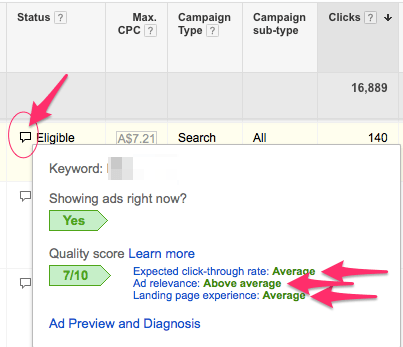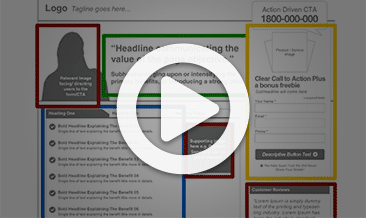
If you paid 15% more than the list price for a new car, would you feel ripped off?
Of course you would!
And yet many if not most Google AdWords advertisers are inadvertently giving Google at least a 15% cash tip by not following best practices.
In this article I’ll share with you a “Do It Yourself Google AdWords Audit” that should take you no longer than 15-30 minutes to perform, but could save you a bundle.
You’ll find this process valuable, whether you manage your own campaigns (you’ll get ideas to cut waste and drive more conversions) or your campaigns are under management (you’ll quickly see whether or not your PPC agency is doing a good job).
(This AdWords Audit is designed to pick up many of the most prevalent and costly mistakes, but it’s not meant to be exhaustive and there are many other cost-saving tactics than we don’t have time to cover here.)
So let’s get started:
1. Check Conversion Tracking Is In Place
Check that conversion tracking is installed.
If you generate leads, you should see a “cost per conversion”, here:
If you operate an e-commerce store, you should see both conversion count, and revenue driven (called “e-commerce tracking”).
If these numbers are showing, look at the last 30 days’ figures and match up the numbers AdWords is telling you with what your other sources (e.g. CRM system or email inbox) is telling you – the two should more or less agree.
Of course, conversion tracking must be set up correctly. Google has a good “how to” article here.
2. Review Campaign Settings
Click on a campaign and review campaign settings. Here are a few things you should look for:









3. Check Ad Group Structure
For search campaigns, your ad groups should be organised into tight themes, like this:

Beware of campaigns with just one or only a small handful of ad groups – they are typically not targeted or relevant enough.
A useful rule of thumb is that no ad group should contain more than 30 keywords.
4. Scan For Keyword Issues
Keywords are a BIG topic. At this stage, we just want to check a few things:
- Do you have a large number of keywords (hundreds or thousands, not dozens)?
- Are ALL the keywords relevant to what you do?
- Have you avoided very broad keywords? These tend to chew budget without leading to conversions.
5. Review Search Queries To Eliminate Waste
This great report allows you to see where you’ve been unwittingly wasting money on irrelevant clicks.
Step 1: in the “Keywords” tab, click on the “Details” tab, then “Selected” keywords.
Step 2: review the keywords that have triggered your ads, and note anything that is not relevant to what you do.
Step 3: add any irrelevant search queries as “negative keywords” at either the account, campaign or adgroup level.
6. Boost Keyword Quality Scores
Quality Scores are the secret sauce that allow your ads to appear higher than your competitors’ ads in the sponsored results, while paying less per click than them!
Step 1 is to find out what your current keyword Quality Scores are, which you can do by selecting the “Columns” button within the “Keywords” tab, and switching on the Qual. Score column.
Step 2 is to order your keywords by Impressions and/or Clicks to see what the Quality Scores of your most important keywords are.
You want your most important keywords to have a Quality Score of at least 7/10. With one client, increasing the Quality Score of their most important keywords from a 7 to a 10 decreased Cost Per Click by 75%. Quality Score is IMPORTANT.
Step 3 is to improve your Quality Scores. This can take a little time, but is worth it. A good starting point is to click on the keyword diagnosis feature in the “Status” column of the keyword you want to improve. Google will give you hints that tell you what needs fixing.
7. Ad Copy and Ad Testing
The ad copy you use has a huge impact on your AdWords results and ROI.
A highly relevant ad that attracts the clicks of genuine buyers and repels the clicks of non-buyers is like gold dust.
The best ads get high Click Through Rates (CTR), which helps to increase Quality Score and get more clicks to your website.
So you should constantly be testing new ads to beat the current control and continually “raise the bar” on your account.
So for ad copy and testing, step 1 is to navigate to your highest-traffic adgroups and click the “Ads” tab.
Are you testing at least one ad but not more than three ads? Good.
Are you using proven copywriting techniques to attract the click?
Entire books have been written on AdWords copywriting – it’s a BIG topic. But in general, a few of the most important best practices are:
- Include keywords in the ad (usually)
- Make the ad benefit rich
- Replace fluff or filler words or phrases with more specific or evocative words that convey more meaning with fewer characters
- Use specific numbers, amounts and figures
- Read the ad out loud – ads with a pleasant sound (or “cadence”) tend to perform better
- Use copywriting formulas
8. Landing Pages
Landing pages are another huge topic, but a quick test you can do is to:
- Go to your highest-volume adgroups
- Navigate to the Ads tab and open up the destination landing pages of your ads in a new tab
- Check: how closely does your landing page message match the promise made in the ad? Disconnects kill results. By aligning your headline with your landing page, you’ll almost always get more conversions.

In this example, the ad is about making body butter. It mentions 126+ recipes for body butters and balms, and the idea of making these products for fun or profit.
Now let’s look at the landing page.
The headline doesn’t mention body butters or balms. It doesn’t mention the number 126+ recipes, but it does mention “fun or profit” at the end. It seems there is a good opportunity to optimise this landing page for higher conversion!
9. Use “Change History” To Check How Active Your Account Is Being Managed
Particularly if your campaigns are being managed by a third party, it can be informative to look at the “Change History” in your account.
This shows you exactly what changes have been made to your account over what timeframe, so you can see how proactive (or otherwise) your campaign manager is.
The optimal optimisation frequency will depend on the size and complexity of your campaigns.
For a very small or stable account, one optimisation session per week is probably adequate.
For larger campaigns, 3 or more optimisations per week may be appropriate.
Certainly, weeks without optimisation is a problem.
How did you get on?
You may find that performing the above analysis may be quite an eye opener.
By taking action on the just above pointers, it’s entirely realistic to see a very handy increase in ROI.
And if you’ve identified gaps that you can see need fixing, contact us for a free professional review of the potential gains lying dormant in your AdWords account.
Want more traffic and lead generation tips? Check out our free video training series:














